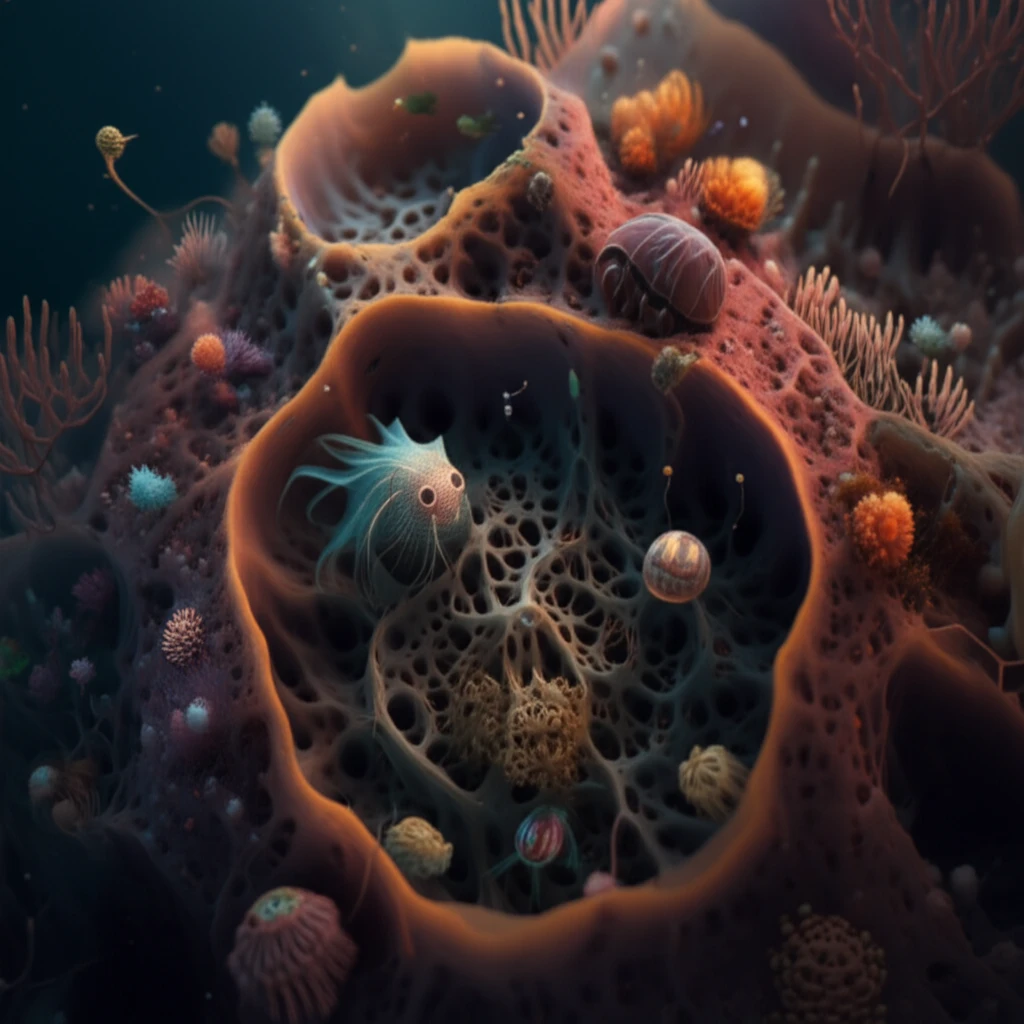
Hidden Cityscapes: Uncovering the Secret Life Inside Sea Sponges
"Dive into the surprising world of sponge ecosystems and discover the critical role these underwater habitats play in marine biodiversity."
Imagine a bustling city, not made of concrete and steel, but of living tissue and intricate canals. This is the reality within sea sponges, which aren't just simple organisms but complex ecosystems teeming with life. These vibrant communities, composed of both permanent residents (endofauna) and temporary visitors (epifauna), play a vital role in marine biodiversity, especially in rocky shore environments.
Sponges act as biogenic substrates, essentially creating three-dimensional habitats that increase the available space and shelter for a diverse range of benthic fauna. Think of them as the underwater equivalent of coral reefs, offering refuge and resources to countless creatures. From tiny crustaceans to larger mollusks, these organisms find food, protection, and a place to call home within the sponge's unique structure.
Understanding the dynamics of these sponge-associated communities is crucial for monitoring the health of our oceans. A recent study delved into the temporal variations of these assemblages within the red sponge Tedania ignis, shedding light on how these miniature metropolises respond to environmental shifts and internal factors.
What Makes Sponges Prime Real Estate for Marine Life?

Sponges significantly boost marine biodiversity, particularly along rocky shores. They expand the range of available space and food, attracting various benthic fauna. As ecosystem engineers, sponges enhance habitat complexity, influencing local biodiversity patterns. Organisms like sponges, sabellariid polychaetes, bryozoans, mussels, barnacles, ascidians, and macroalgae offer shelter and diverse associations, including commensalism, mutualism, and parasitism.
- Shelter From Predators: The complex structure of sponges offers protection from larger predators, allowing smaller organisms to thrive.
- Food Source: Sponges filter water, capturing organic particles that serve as a food source for many associated species.
- Stable Environment: Sponges provide a relatively stable microenvironment compared to the surrounding open water, buffering against extreme temperature or salinity fluctuations.
Why This Research Matters
This study highlights the intricate relationships within sponge communities and their sensitivity to environmental changes. The finding that epifaunal assemblages are more influenced by external factors, like organic matter content, suggests they could be valuable indicators of water quality and overall ecosystem health. By understanding these dynamics, we can better monitor and protect these hidden cityscapes and the biodiversity they support.
